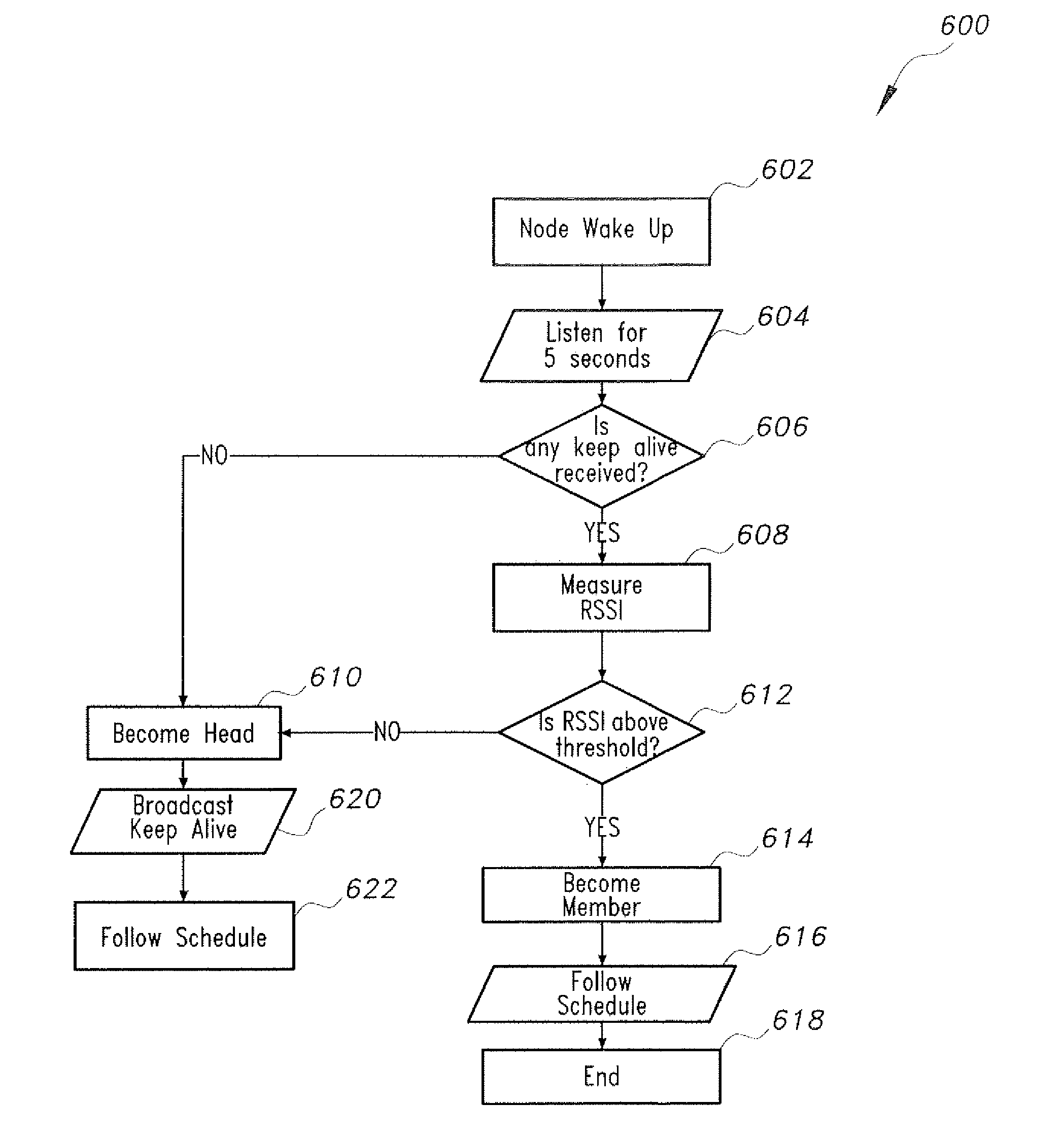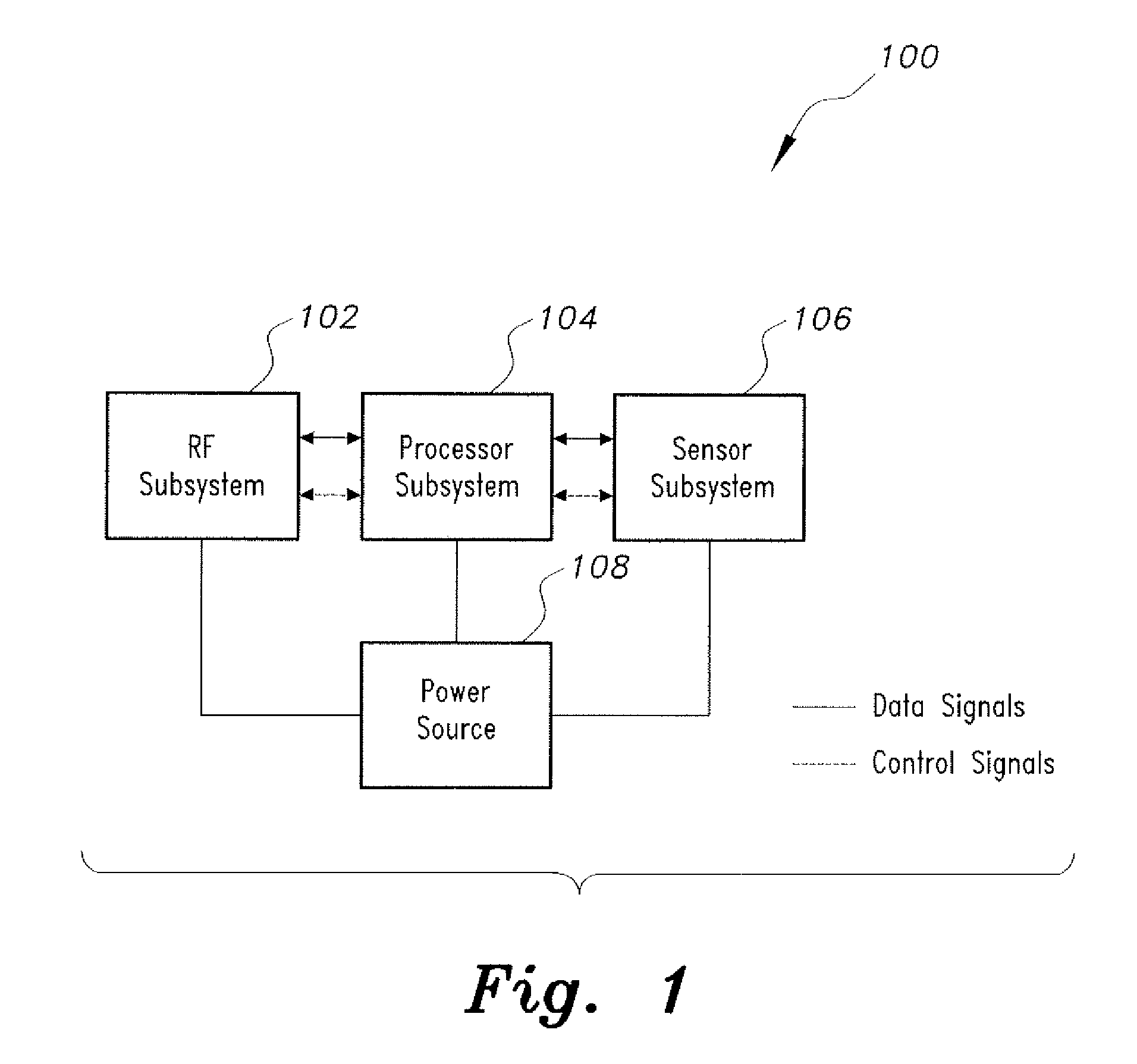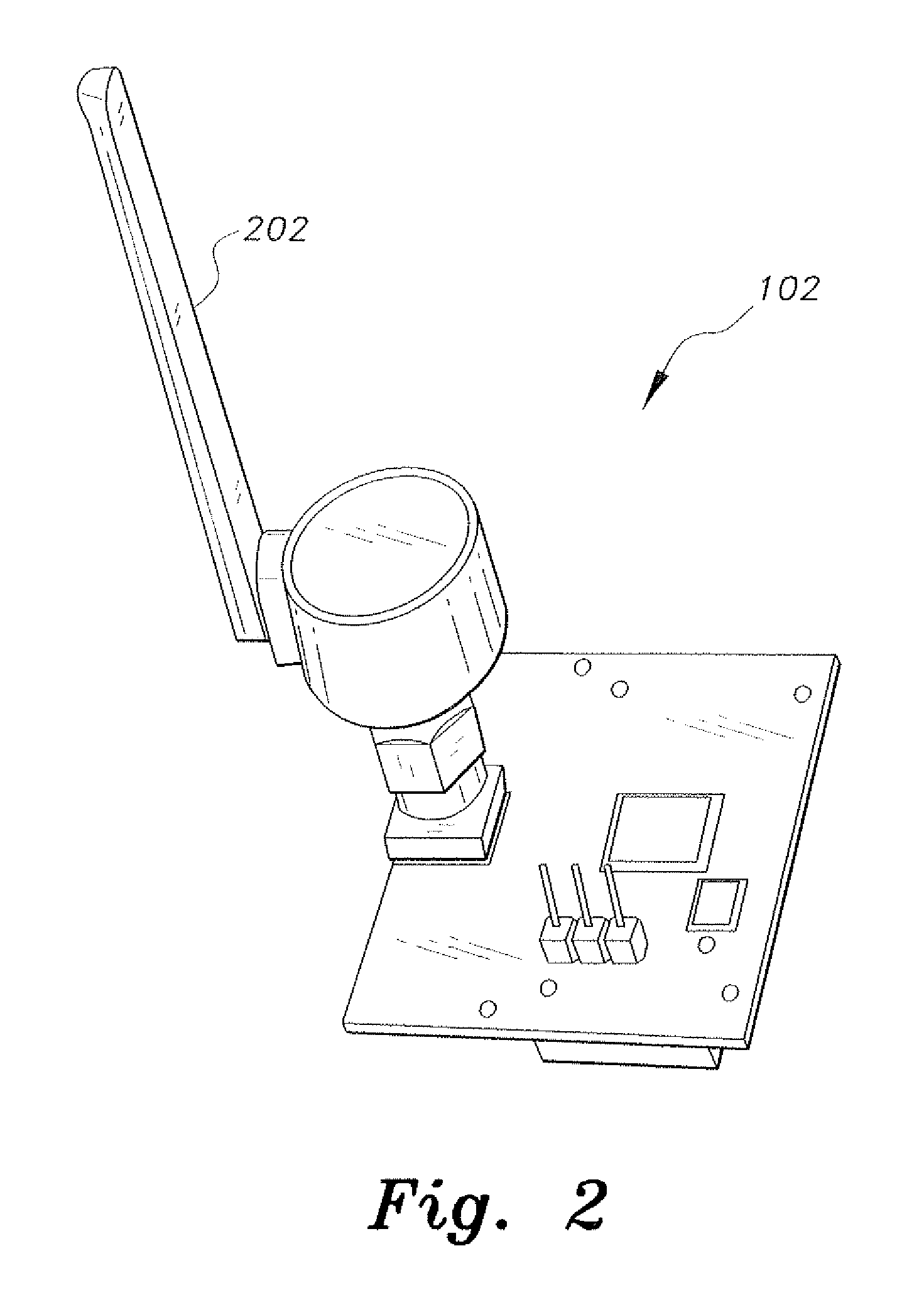Wireless sensor network with energy efficient protocols
a sensor network and energy-efficient technology, applied in the field of wireless protocols and networks, can solve the problems of increased power consumption, increased power consumption, and increased power consumption of the node, and achieve the effects of reducing the overall height of the node, reducing the size, and high performan
- Summary
- Abstract
- Description
- Claims
- Application Information
AI Technical Summary
Benefits of technology
Problems solved by technology
Method used
Image
Examples
Embodiment Construction
[0029]The wireless sensor network with energy efficient protocols includes a wireless node using off-the-shelf sensors and components that can support a plurality of different sensors. The node includes a high performance microcontroller unit (MCU) with a double-sided design to reduce the physical size to a minimum. The use of special stub antennas further decreases the overall height of the node.
[0030]At the outset, it will be understood that the diagrams in the Figures depicting the wireless sensor network with energy efficient protocols are exemplary only, and may be embodied in a dedicated electronic device having a microprocessor, microcontroller, digital signal processor, application specific integrated circuit, field programmable gate array, any combination of the aforementioned devices, or other device that combines the functionality of the wireless sensor network with energy efficient protocols onto a single chip or multiple chips programmed to carry out the method steps de...
PUM
 Login to View More
Login to View More Abstract
Description
Claims
Application Information
 Login to View More
Login to View More - R&D
- Intellectual Property
- Life Sciences
- Materials
- Tech Scout
- Unparalleled Data Quality
- Higher Quality Content
- 60% Fewer Hallucinations
Browse by: Latest US Patents, China's latest patents, Technical Efficacy Thesaurus, Application Domain, Technology Topic, Popular Technical Reports.
© 2025 PatSnap. All rights reserved.Legal|Privacy policy|Modern Slavery Act Transparency Statement|Sitemap|About US| Contact US: help@patsnap.com



